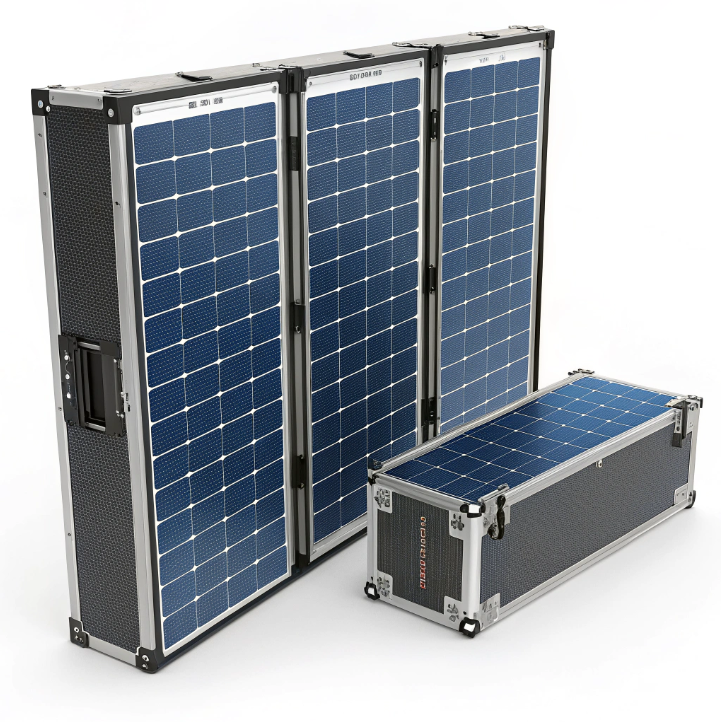The "Power Anywhere" Gold Rush: Why Your Outdoor Brand's Next Bestseller Isn't a Tent, It's This Folding Panel.
by
The "Power Anywhere" Gold Rush: Why Your Outdoor Brand's Next Bestseller Isn't a Tent, It's This Folding Panel.
Ever feel overwhelmed by the endless tech gadgets promising to revolutionize outdoor adventures?
Your audience craves reliable power, not just another gadget—they need durable, high-performance solar panels[^1] that deliver consistent energy in rugged conditions.
Let’s dive deeper into what truly makes a folding panel stand out—and why it’s poised to become the cornerstone of modern outdoor gear.
More Than a Gadget: The Military-Grade Durability Test Our Folding Panels Passed
Ever wondered if your gear can survive an unexpected storm or a accidental drop?
Military-grade durability[^2] means rigorous testing for impact, water, and extreme temperatures, ensuring your panel withstands the harshest conditions without failing.
The Real-World Rigors of Durability Testing
Not all "rugged" claims hold up under pressure. Military standards (like MIL-STD-810) involve tests that simulate real-world abuse:
- Drop Tests: Panels are dropped from specified heights to mimic accidental falls.
- Water and Dust Resistance: IP ratings (e.g., IP67[^3]) ensure functionality in rain or dusty environments.
- Temperature Extremes: From desert heat to freezing cold, panels must perform reliably.
These aren’t just marketing buzzwords—they’re assurances that your product won’t fail when your customers need it most. For outdoor enthusiasts, this means peace of mind during unpredictable adventures.
| Test Type | Standard | Real-World Scenario |
|---|---|---|
| Drop Test | MIL-STD-810G | Falling from a backpack |
| Water Resistance | IP67 | Heavy rain or river splashes |
| Temperature Cycle | -40°C to 85°C | Desert days, alpine nights |
Military-grade panels are just marketing hype.
False. Authentic military testing involves rigorous, repeatable standards that ensure reliability in extreme conditions.
All IP67-rated panels are equally durable.
False. IP ratings certify resistance, but build quality and materials vary widely between brands.
"Watt ≠ Performance": The REAL Metric for Choosing a Folding Panel Your Customers Won't Return.
Ever bought a high-watt panel only to find it charges slower than expected in real use?
Performance hinges on efficiency (%) and low-light effectiveness, not just wattage—look for panels with high conversion rates and optimized cells for consistent output.
Why Wattage Alone Doesn’t Tell the Whole Story
Watts measure potential power, but efficiency determines how much of that power actually reaches your devices. Key factors include:
- Conversion Efficiency: Higher efficiency (e.g., 23% vs. 18%) means more energy from the same sunlight.
- Low-Light Performance: Panels with bypass diodes or monocrystalline cells perform better in cloudy or shaded conditions.
- Real-World Output: Metrics like "energy harvest per day[^4]" matter more than peak wattage for all-day adventures.
For your customers, this means faster charging times and reliability, even when the weather doesn’t cooperate.
| Metric | Why It Matters | Ideal Spec |
|---|---|---|
| Conversion Efficiency | Maximizes energy from limited sun | 22%+ |
| Bypass Diodes | Reduces power loss from shading | 3+ diodes per panel |
| Low-Light Output | Ensures charging on overcast days | >70% of rated wattage |
Higher wattage always means faster charging.
False. Efficiency and environmental factors greatly impact real-world performance.
All monocrystalline panels perform equally in shade.
False. Bypass diodes and cell design are critical for shaded conditions.
Factory Secrets: The 3 Design Choices That Make a Folding Panel Charge 2X Faster in Low Light.
What if your panel could outperform others even when the sun hides?
Optimized cell layout, advanced diodes, and reflective surfaces can double charging speed in low light, turning mediocre panels into powerhouse performers.
Engineering for Low-Light Dominance
Most panels suffer in suboptimal light, but these design tweaks make a dramatic difference:
- Cell Cutting and Layout: Half-cut cells reduce internal resistance, increasing efficiency in partial shade.
- Bypass Diodes: These components isolate shaded cells, preventing them from dragging down the entire panel’s output.
- Surface Coatings: Anti-reflective coatings capture more diffuse light, boosting early morning and cloudy day performance.
For brands, emphasizing these features translates to products that deliver when competitors fail—building trust and reducing returns.
| Design Feature | Function | Performance Gain |
|---|---|---|
| Half-Cut Cells | Reduces energy loss | +10-15% efficiency |
| Multi-Diodes | Isletes shaded sections | Prevents total power drop |
| Anti-Reflective Coat | Captures angled/low light | +20% output in overcast |
All panels use the same diode technology.
False. High-end panels incorporate advanced diodes for better shading tolerance.
Reflective coatings are just for aesthetics.
False. They significantly enhance light absorption in low-visibility conditions.
Conclusion
Prioritize durability, efficiency, and smart design to create folding panels that outperform in real-world conditions and build lasting customer loyalty.
[^1]: Explore how durable solar panels can enhance outdoor adventures with reliable energy.
[^2]: Learn about the rigorous testing that ensures military-grade durability in outdoor products.
[^3]: Understand the significance of IP67 ratings in ensuring water and dust resistance.
[^4]: Understand the importance of daily energy harvest metrics for solar panel users.
Popular Posts
You may also be interested in:




